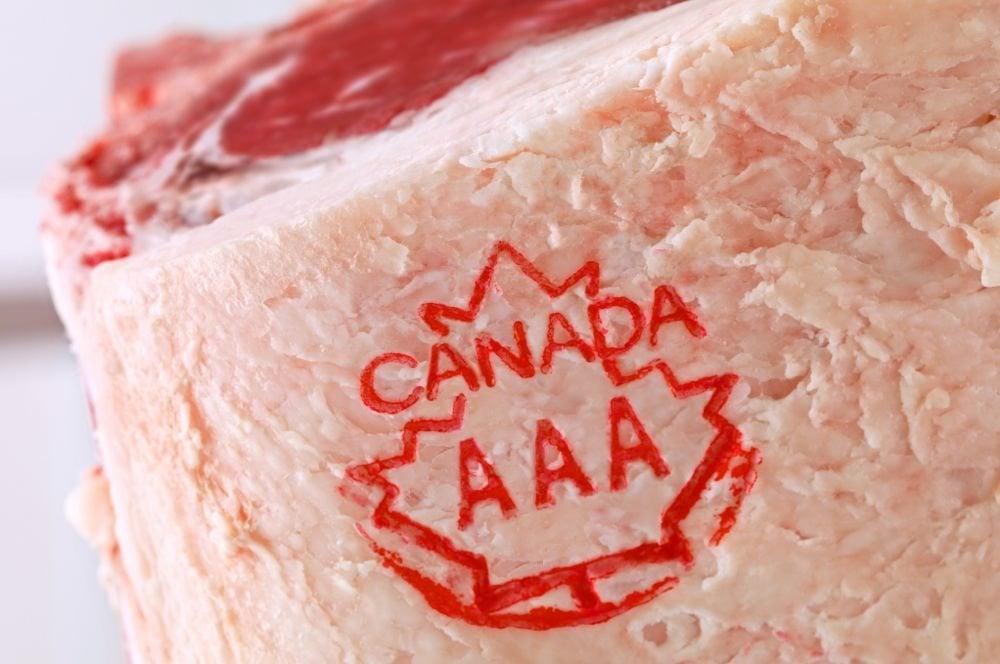Campfire smoke and laughter filled the air as some of the brightest young talents in the Canadian beef and culinary industries met on the banks of the Pekisko Creek. On the menu today: chili cooked over a fire, plus the opportunity to build vital relationships.
The beef industry is frequently told to share its story with the world, and the Cattlemen’s Young Leaders (CYL) program took a step in this direction by working to build trust and communication with those who meet with the consumer everyday: Canada’s top young chefs.
Read Also

Growing Canada’s beef herd: CCA’s priorities working with new federal government
This is my first column since the federal election. The Canadian Cattle Association works with all elected officials and parliamentarians, regardless…
On this sunny June morning, participants from the CYL program teamed up with finalists from the Hawksworth Young Chef Scholarship for a cooking competition at the Bar U Ranch National Historic Site south of Longview, Alta. With two hours to prepare a dish for a panel of judges, the teams shared their expertise and created mutually beneficial connections. This setting, a place that celebrates Canada’s ranching heritage, was ideal for establishing partnerships meant to strengthen both industries and better inform consumers about beef production.
CYL annually selects a group of people between the ages of 18 to 35 involved in the beef industry and pairs them with a mentor in their field. The goal of this program is to develop the next generation of leaders in the Canadian beef industry through mentorship, travel opportunities and learning experiences. The program hosts an annual spring forum for its participants, featuring speakers and tours meant to broaden their knowledge of the Canadian beef industry.
The Hawksworth Young Chef Scholarship was developed by David Hawksworth, a Vancouver-based chef, to develop young Canadian talent in the culinary world. This year, the top two finalists from regional competitions will compete in the national competition in Vancouver this October. Mathieu Paré, executive director of the Canada Beef Centre of Excellence, was approached by Chef Michael Allemeier, who has worked with both the Hawksworth program and Canada Beef, about setting up a beef-related event for the finalists. Paré asked Emily Ritchie, youth leadership co-ordinator at the Canadian Cattlemen’s Association, about the possibility of the two groups meeting for an event, and the timing fit with CYL Spring Forum.
“It was kind of a natural fit that young leaders in culinary and young leaders from the producer side could come together and understand each others’ perspectives better,” said Paré.
The goal for this partnership, Ritchie explained, was to develop relationships and build trust between the two groups. “There was going to be so many other great benefits that came out of it, such as being able to tell the Canadian beef story to people who are ideally going to be defenders of the product,” she said, adding that this gave them the chance to learn more about what consumers want from restaurants.
The group toured Soderglen Ranches at Airdrie, Alta., hearing from Ducks Unlimited representatives about their collaboration on environmental projects. They also visited forage and soil enthusiast Doug Wray at his Irricana operation, and had a lesson in edible wild plants from expert Julie Walker.
“As the group kind of got to know each other and know the common ground that they shared, being a safe, healthy product to share with Canadians, it’s really brought them together,” said Ritchie. “Being able to develop that peer connection, I think, also adds a little bit of authenticity to the trust and the confidence that the young chefs are going to feel in the product.”
CYL participants found this to be a valuable experience, considering the importance of building these relationships.
“It was a really good opportunity to just connect with those who are going to be the front lines,” said Amy Higgins, an Angus breeder and agricultural business development specialist from Quispamsis, New Brunswick. “I think it is just really important to keep in mind the consumer, because you’ve got a person at the end of your product that you don’t necessarily see.”
Annessa Good, a succession-planning consultant whose family raises Simmentals at Cremona, Alta., noted that professionals in the culinary industry receive direct feedback on trends and cuts that consumers want, making this connection even more useful for producers who want to capitalize on that information.
“I want to make sure we hear that first as a producer and not take five years to increase yield genetically wise, because genetics don’t happen overnight,” she said.
Good said that while the industry has been focused on the “Pasture to Plate” approach for some time, it’s necessary to remember that chefs play a key role in introducing consumers to different cuts of beef and new cooking methods. In visiting with the Hawksworth finalists, she learned how much they want to tell the story behind the meals they prepare.
“We had really stimulating conversations yesterday on the bus,” she said. “They were telling us that they want to know where their product is coming from so that they can tell their story of, ‘I met Bob the farmer,’ and have it go from there. That was really big for me.”
From a culinary perspective, Paré saw the importance of giving the young chefs the opportunity to experience beef production firsthand. “These top chefs from some of Canada’s finest restaurants depend on this quality of beef for their business, so to get closer to the product, to better understand it and to meet the people from their age group, young producers, I think has been an amazing, eye-opening experience.”
He mentioned the similarities between the groups in the dedication, sacrifice and passion it takes for youth to excel in both industries, and predicted both groups will come away with a greater appreciation of what the other does.
“Our hope is that these young chefs get a deeper appreciation for the world-class standards, the highest-quality genetics, the care for the environment, the stewardship of the landscape — all these very important aspects of beef production that they’ve had a chance to explore, and they’ll bring that back to their operations.”
This was reflected in the feedback from the Hawksworth finalists after the event. Before meeting the CYL participants, Chef Camilo Lapointe-Nacimento of Le Mousso in Montreal admitted that he had a negative view of the beef industry.
“Now, I realize our Canadian beef is raised and processed with care for the land, respect for the animals and is an important part of our communities and Canadian heritage,” he said. “I will proudly share our Canadian beef story with my customers, colleagues and mentor my junior cooks to appreciate its quality attributes and the world-class standards in place that ensure it is safe and sustainably produced.”
Ben Miller, sous chef at Vancouver’s WEST Restaurant, reported that when he returned to work he shared what he learned with his team. “I was very impressed by everything we were shown,” he said. “My eyes have been opened on the Canadian beef industry, and for that I am grateful.”
Back at the campfire chili cook-off, the CYL participants outnumbered the chefs. Two CYL participants, Jessica Giles and Jacqueline Toews, rose to the top.
The CYL team wants to see this partnership continue and will discuss future possibilities with Canada Beef. “There’s a ton of synergies between the two programs,” said Ritchie. “There’s a ton of things that are really similar and we have a lot of the same experiences, so I think the two programs tie together really well.”

















